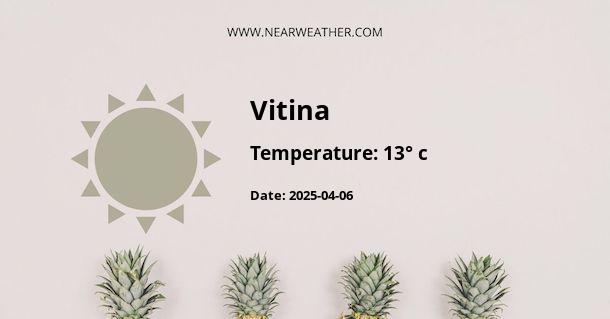Exploring the Climate and Weather of Višegrad, Bosnia and Herzegovina
The town of Višegrad, situated in the far east of Bosnia and Herzegovina, lies on the banks of the Drina River. Known for its historical bridge and cultural significance, this locale also holds a distinctive pattern of climate and weather that changes throughout the year. Below, we delve into the climatic conditions of Višegrad, analyzing temperature variations, precipitation patterns, and other meteorological phenomena pertinent to this region.
Geographical Influence on Višegrad's Climate
Before we examine the seasonal climate, let us consider the geographical factors that influence Višegrad's weather patterns:
- Elevation: Višegrad is situated at an elevation of approximately 400 meters above sea level, affecting its temperature and precipitation levels.
- Proximity to the Drina River: Being close to a large water body can moderate temperature extremes, particularly during the summer and winter months.
- Mountain Ranges: The surrounding Dinaric Alps impact the flow of air masses, contributing to the continental climate with certain Mediterranean influences.
Temperature Overview
The town experiences a humid continental climate with warm summers and cold winters. Let's look closer at the temperature variations you can expect.
The average annual temperature in Višegrad ranges from a low of -2°C (28°F) in January to a high of around 26°C (78°F) in July.
| Month | Jan | Feb | Mar | Apr | May | Jun | Jul | Aug | Sep | Oct | Nov | Dec |
|---|---|---|---|---|---|---|---|---|---|---|---|---|
| Avg High (°C/°F) | 2/36 | 5/41 | 10/50 | 16/61 | 21/70 | 24/75 | 26/78 | 26/78 | 21/70 | 16/61 | 9/48 | 4/39 |
| Avg Low (°C/°F) | -2/28 | -1/30 | 2/36 | 6/43 | 11/52 | 14/57 | 16/60 | 15/59 | 11/52 | 6/43 | 2/36 | -1/30 |
Precipitation Patterns
Precipitation in Višegrad varies throughout the year, with higher amounts recorded typically in the late spring and summer months due to regional atmospheric instabilities.
| Month | Jan | Feb | Mar | Apr | May | Jun | Jul | Aug | Sep | Oct | Nov | Dec |
|---|---|---|---|---|---|---|---|---|---|---|---|---|
| Avg Precipitation (mm/in) | 52/2.0 | 45/1.8 | 55/2.2 | 70/2.8 | 79/3.1 | 91/3.6 | 72/2.8 | 68/2.7 | 59/2.3 | 70/2.8 | 69/2.7 | 60/2.4 |
Seasonal Climate Considerations
Each season brings different weather characteristics:
- Spring: The season is marked by a gradual increase in temperatures and a steady rise in precipitation, leading to more frequent rain showers, especially in May.
- Summer: Summers are warm with occasional heatwaves. July and August are generally the hottest months, but the proximity to the river provides a cooling effect. Heavy showers and thunderstorms are common in the evenings.
- Autumn: Fall sees a decrease in temperature and daylight hours. The season is known for its fluctuating temperatures, with warm spells followed by sudden cold periods, especially in November.
- Winter: Winters are cold, with temperatures often dropping below freezing, especially at night. Snowfall occurs, but the amount can vary significantly from year to year. January is typically the coldest month.
Extreme Weather and Natural Events
Though Višegrad generally has a stable climate, it is not immune to extreme weather events and natural occurrences:
- Floods: Due to its riverine location, there is a potential for flooding, especially during periods of intense precipitation or rapid snowmelt in the surrounding highlands.
- Heatwaves: In recent years, due to climate change, Višegrad has experienced more frequent and intense heatwaves during summer months, which has implications for public health and energy consumption.
- Cold Snaps: Winters can occasionally be punctuated by extreme cold snaps caused by polar air masses descending into the region.
Climate Change Considerations
Climate change projections suggest several impacts on Višegrad's weather patterns:
- Increasing temperatures, potentially leading to more intense and prolonged heatwaves.
- Changes in precipitation distribution, with implications for water resources and flood risk.
- Shifts in snowfall patterns, affecting winter recreational activities and the broader ecosystem.
Advisories and Preparedness
Residents and visitors should remain vigilant of local weather advisories, especially those related to extreme heat or cold, flooding, and severe thunderstorms. It is advisable to consult forecast updates and heed advice from the Federal Hydrometeorological Institute of Bosnia and Herzegovina for timely alerts and information.
Travel and Activity Recommendations
Weather in Višegrad presents both challenges and opportunities for activities throughout the year:
- Winter: It's a good time for those interested in experiencing the cultural aspects indoors or partaking in winter sports in the nearby mountains.
- Spring: As the region blooms, outdoor adventures are favorable, particularly hiking and bird-watching.
- Summer: Ideal for water-based activities on the Drina River and exploring the town's rich history, though always with sun protection and hydration in mind.
- Autumn: Offers a palette of colors, perfect for photography and enjoying the milder temperatures before the winter sets in.
A Final Note on Višegrad's Weather
Understanding Višegrad's climate and weather patterns is essential for anyone planning to live in, visit or study the area. Being prepared for the town’s unique conditions will help ensure that your time in Višegrad is both safe and enjoyable, regardless of the season.
A - Vitina's Latitude is 43.237499 & Longitude is 17.483891.
A - Weather in Vitina is 13° today.
A - Climate Conditions in Vitina shows few clouds today.
A - Humidity in Vitina is 86% today.
A - Wind speed in Vitina is 2.12 km/h, flowing at 18° wind direction. today.
